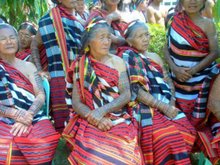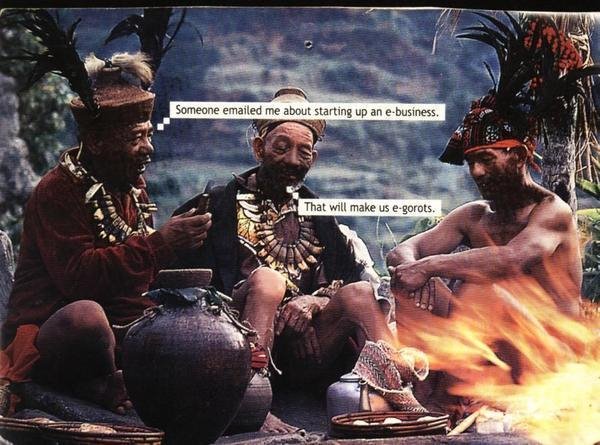
This film was one of two films featured in The 8th Asian Film Symposium in the category of Philippine Medium Length Films entries, sponsored by The Substation, Singapore. It was shown on September 21, 2008 along with Infancia en las Islas de Filipinas, si Fecha (Childhood in the Philippines Islands, undated). Other countries, who participated in this event, were China, Indonesia, Malaysia, Singapore and Thailand.
Synopsis: Bontoc Eulogy / Philippines / 1995 / 57min
A personal story about the Filipino experience at the St. Louis World's Fair of 1904, the film unfolds from the perspective of two characters, the Narrator, a Filipino immigrant in America, and Markod, an Igorot warrior held captive at the Fair. It chronicles Markod's experience, as one of the 1,100 natives brought to America to be part of the "Philippine Reservation." The St. Louis Fair was the site of the largest "ethnological display rack" the world had ever known, a place where thousands of "primitive" men and women from all over the globe were displayed side by side with the artifacts and monuments of Western scientific progress and civilization.
As a "documentary" that locates itself deeply in the fractures between historical truths and possibilities, the film sets stakes into seldom-explored territories of imagination. Simultaneously autobiography, detective-story, and a highly layered meditation on cultural abduction and socialism, it is a unique simulacra of "historical" cinema. As a reflexive examination of traditions and surfaces of "cinema as witness," the film functions as an intricate dissection of the very process of narrative and representation.
Marlon E. Fuentes is a Philippine-born filmmaker and photographer based in Los Angeles, California. His work has been shown in over 60 individual and group exhibitions in the last two decades in Asia, Europe, and the U.S., most recently at the Museum of Modern Art and the Guggenheim Museum in New York. He is represented in such collections as the Smithsonian Institution's National Museum of American Art, the National Museum of American History, the Houston Museum of Fine arts, the Library of Congress, and the Corcoran Gallery of Art.
The curator of these Filipino films told the audience during the post-screening talk (Fuentes was not present though) that Bontoc eulogy is better termed a "mockumentary" or a "fake documentary". While it is true that some footages shown were really of the St. Louis Fair of 1904, most of them are a collage of different videos of Igorots and other indigenous groups taken by some American film companies during the American occupation of the Philippines, which the director has merged together with his own. Fuentes, who also acts as himself in the film, states in his narration that one of his grandparents was an Igorot who was taken to the St. Louis Fair. This means he is half-Igorot, maybe a half-Ifontok, but I do not know if that is also a fake claim.
Personally, I learned much about the St. Louis Fair from this film. I have read a bit about this matter. When I was in university, I received an email from a Filipina in the US researching on this, who asked if a certain man, who has the same surname as myself and who was listed as one of those who went to the said fair, was an ancestor. I wrote to tell her I do not think so since I have not heard any story regarding this from my grandparents, but that he may be the ancestor of the other clans, who were not related to us but who have the same surname.
Although the film is not really a documentary, the director's imaginative depiction of the lives of the Igorots, who were taken to the fair, juxtaposed with the narrative of a modern-day Igorot living in the US in search of his roots was quite realistic and stimulating. As mentioned in the film, a lot of the Filipino contingent in the St. Louis Fair went missing, and there was no information as to how many of the original 1,100 natives went back home afterwards. However, to the organizers, the event was considered a great success and a similar fair was held in Ghent, Belgium, where 55 Igorots went for display. You can read the rest of the post here.
In retrospect, I thought about how much of the issues in the film still rings true for us modern-day Igorots -- just as the Igorots who went to the St. Louis Fair showcased their culture for the foreigners to gawk at, devoid of its real context, we similarly "showcase" our cultural heritage today for consumerism. Just as the narrator tries vainly to search for his roots, we continue to search for balance amidst the powerful influences that continuously change our way of life and in turn, the way we look at ourselves. Maybe like the narrator, we no longer recognize who we are and what we have become. Just as some of the Igorots went missing and did not return home, many of us have already replanted ourselves in other places and may not be returning home.
So maybe, just maybe, this is a fitting time for a Bontoc or Igorot eulogy.










